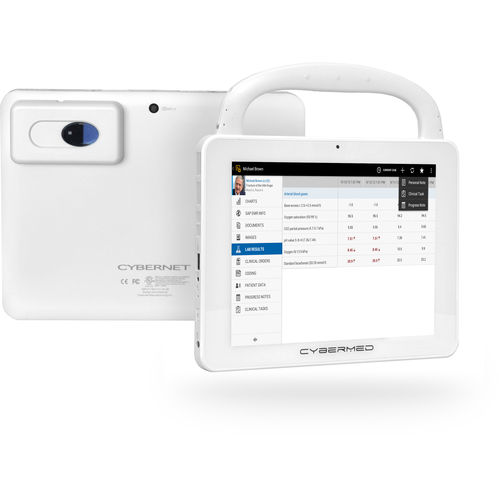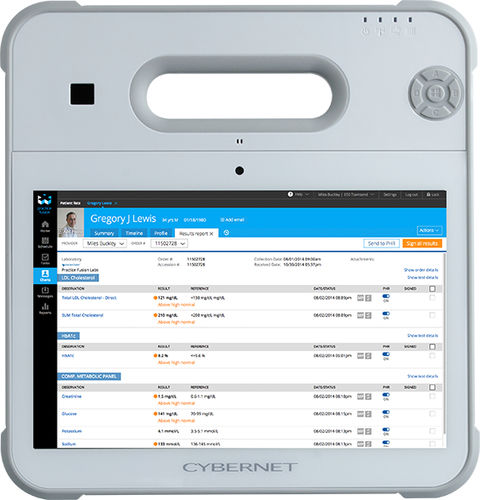
#Industry News
EMERGENCY VEHICLE TECH: A LOOK AT CUTTING-EDGE COMPUTER SYSTEMS
Computers crucial role in aiding first responders
First responders – police officers, emergency medical technicians, and firefighters – are essential to preserving people’s lives and properties during a crisis. The prompt arrival of an emergency vehicle with responders can sometimes mean life or death for the people in distress.
Computers play a crucial role in aiding first responders in performing their duties. Today’s article covers a specific one called a mobile data terminal as well as other kinds of computers that may be found in emergency vehicles.
What is an Emergency Vehicle?
An emergency vehicle is a specialized mode of transport utilized by emergency services to respond swiftly to urgent situations, such as a raging house fire or an individual found unconscious in a gym’s steam room. Notable examples include ambulances, fire trucks, and police cars. Each is designed for its unique role in public safety.
These vehicles stand out prominently, featuring eye-catching colors and distinctive markings like the iconic black and white striping commonly seen on police cars. Each type of emergency vehicle is meticulously customized to meet the demands of its specific function; for instance, fire trucks are outfitted with long ladders, hoses, and water tanks to combat fires efficiently. Police cars, on the other hand, come equipped with powerful sirens, flashing light bars, rotating beacons, and other alert systems. All these and more ensure that civilians are aware of their presence – and get out of the way – as they rush to the scene of an emergency.
Typically, these vehicles are operated by governmental agencies at the city or state level, though some, particularly ambulances, may be run by private companies dedicated to providing timely medical assistance.
Mobile Data Terminal: Emergency Vehicles’ Vital Link
A mobile data terminal (MDT) is a specialized computer in virtually all emergency vehicles. It is also known as a mobile digital computer (MDC) and motor vehicle computer (MVC). Many are also referenced by their manufacturers (e.g., iMobile, KDT, etc.)
Mobile Data Terminals (MDTs) are sophisticated tools that integrate computer-aided dispatch (CAD) software, establishing a vital connection between fleet vehicles and a central dispatcher. This system allows dispatchers to efficiently assign tasks and direct vehicles to their designated destinations, ensuring timely responses. Depending on the specific role of the vehicle, MDTs can perform various additional functions. For instance, in law enforcement, officers utilize records management systems (RMS) to access crucial data such as arrest records and incident reports. Meanwhile, Emergency Medical Technicians (EMTs) leverage these terminals to retrieve detailed maps and real-time route information, enabling them to navigate quickly to emergencies while ensuring optimal patient care.
Private sector transport like taxicabs and delivery vehicles use MDTs as well.
Police Car Computers
The police vehicle is a harsh environment for electronics. The vibrations from a car chase can shake an off-the-shelf laptop or tablet to pieces. Officer shifts can be long and offer no opportunity to recharge the computer’s battery.
The MDT is specially built to handle these conditions. Features found in most include:
Portability: MDTs used by law enforcement are either laptops or rugged tablets. They must be securely installed inside the vehicle following specific protocols for driver safety, device security, and user ergonomics. Mini industrial PCs can also be found in police vehicles. Variable DC voltage input support is necessary to handle changes in power from the car’s battery, especially during ignition.
Rugged: Many MDTs have thicker cases to withstand shocks and drops. A solid-state disc or gel-mounted storage drive protects precious data from such conditions. MDTs are rated IP65 and higher to resist dust and water from damaging the interior.
Touchscreen: Officers sometimes have to bring their MDT out to the field. Industrial tablets are best for such tasks and should have a large screen (8”-12”), excellent outdoor viewability, and touchscreen capability for wet and glove modes.
Ambulance Computers
An ambulance is the emergency vehicle for emergency medical technicians (EMTs) and paramedics. These professionals often spend extended periods waiting in the ambulance for a call to service. When a call comes in, they must swiftly navigate to the location, as their timely response can significantly impact the outcome for the individual in distress.
MDTs found in ambulances usually come with all the specialized features of police cars, like rugged design. EMTs and paramedics may also carry provided medical tablets when examining patients at the service location. In addition to being portable, rugged, and touchscreen-controlled, the tablets should also have the following:
Medical grade: The tablets are 60601-1 and 60601-1-2 certified to be safe near patients and not interfere with other medical devices.
Built-in barcode scanner and RFID readers: The former can scan any medications found on the scene, for example, while the latter allows only authorized personnel to access the tablet’s private electronic medical records.
Legacy port compatibility: Ambulances may be full of legacy devices - vital medical instruments and machines no longer supported by their original manufacturers. Medical tablets with expansion options, including USB, Ethernet, and serial ports, allow access to these legacy devices while providing modern features like increased cybersecurity.
Fire Engine Computers
Computers found in fire engines and related vehicles are similarly equipped like police vehicles and ambulances – portable, mounted, and loaded with appropriate software like CAD and building schematics. Two areas where they may differ include:
More ruggedness: Most firefighter computers are military grade and meet the US Department of Defense standards. Being military grade allows them to deal with greater shock, drops, and vibrations than the rugged computers in many police vehicles and ambulances.
Non-medical-grade: Firefighter computers typically are not medical grade unless found in the rescue ambulances used by the fire department.
A Partner for the Right Computer for Emergency Vehicles
First responders—police officers, emergency medical technicians, and firefighters—depend on their emergency vehicles to reach their destinations during calls for service. All three services utilize mobile data terminals and other computers to perform essential tasks.
If you are looking for the best computer for your emergency vehicles, contact the team at Cybernet Manufacturing. Our industrial computers and tablets are built from the ground up to perform in demanding environments like firefighting and rapid patient transport.







